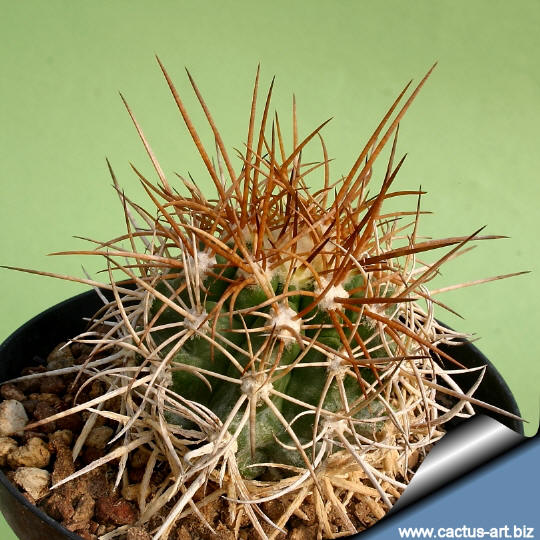|
Family:
Cactaceae (Cactus
Family)
Scientific name: Copiapoa coquimbana (Karwinsky ex Rümpler)
Britton & Rose
This is one of the oldest species, described in 1885 by Rümpler as
Echinocactus coquimbanus, and later transferred to the
genus Copiapoa by Britton and Rose.
Origin: South of the Copiapoa genus range
(from the hills around the coastal towns of Coquimbo and La Serena in
the province of Coquimbo) Chile.
Conservation status: Listed in
CITES appendix 2.
Synonyms:
-
Copiapoa pendulina
-
Copiapoa vallenarensis
-
Copiapoa pseudocoquimbana
-
Copiapoa wagenknechtii
-
Echinocactus coquimbanus
-
Copiapoa alticostata
|
|
Description:
Elongated-globose
stems, 10-15 cm in diameter,
that branch profusely, forming large clumps up 1 m
wide
and 60 cm high.
Pale to
bright green,
and crowned by a dense
mass of long white wool,
particularly at flowering time.
Ribs: There are 10 to 17 tuberculate ribs, with
a rounded, raised edge and a wide base.
Areoles: Apical,
convex, covered with short
wool when young, later glabrous,
about 0,5-0,8 cm, 2 cm apart.
Radial spines: 8-10, fairly slender or slightly curved,
horizontal, honey-amber, brown or black, becoming grey with age.
Centrals spines: Absent or one or two thicker ones, up to 3 cm long.
Roots: Fibrous, unlike other species which have taproots.
Flowers: Campanulate, 3 cm long, and they grow from the centre of
the white wool at the apex. The outer segments of the perianth are
linear and greenish. The inner segments are wide, blunt and yellow
|
|

Copiapoa coquimbana KK1
A fiercely spined seedling. The spines' size and colour vary considerably
from one specimen to another
Cultivation: Very
slow-growing, it needs full sun, but should be protected from excessive
heat and sun in summer. t requires light watering and good drainage.
Keep warm and dry in winter to avoid rot. It needs mild heat in
winter; avoid any frost.
Propagation: Seeds, or
stems planted as cuttings. Grafting
is often used to speed growth rate,
and to create a back-up to plants in collection.
Photo of conspecific taxa, varieties, forms and
cultivars of Copiapoa pendulina
(This taxon has lots of synonyms (like
most Copiapoa), with several controversial
varieties and subspecies):


|